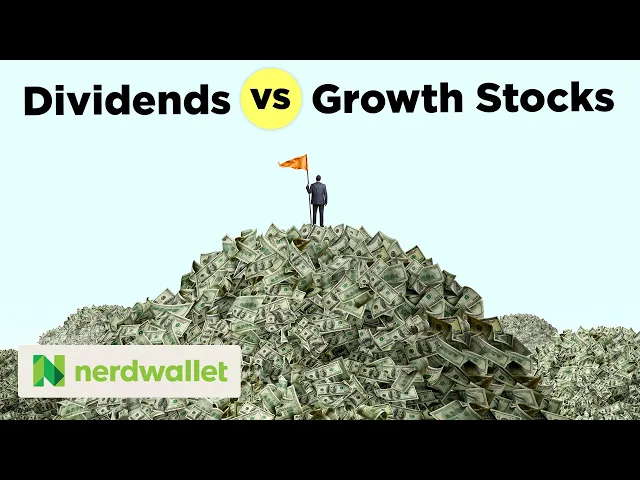
John D. Rockefeller once said, “Do you know the only thing that gives me pleasure? It’s to see my dividends coming in.”
Whether you agree or not, you can’t blame Rockefeller for being excited about his dividend income. It’s a powerful tool for compounding wealth over the long term.
From January 2000 to January 2020, the S&P 500 index returned 129.95% without accounting for dividends. But if you had reinvested all of the dividends paid by the stocks in the index during that time, the return would’ve jumped up to 235.65%.
That said, there is a group of stocks within the S&P 500 that pays dividends much more reliably than other companies. That group is called the dividend aristocrats.
Advertisement
|
NerdWallet rating
|
NerdWallet rating
|
NerdWallet rating
|
|
Fees $0 per online equity trade |
||
|
Promotion None no promotion available at this time |
Promotion None no promotion available at this time |
Promotion Get up to $700 when you open and fund a J.P. Morgan Self-Directed Investing account with qualifying new money. |
What is a dividend aristocrat?
A dividend aristocrat is an S&P 500 stock that has increased its dividend every year for at least 25 years.
Increasing its dividend means the company increased the dollar value of dividends per share. The dividend aristocrats don’t necessarily need to increase their dividend yields over time. (Dividend yield is a percentage calculated by dividing the last 12 months of dividends per share by the current share price. It fluctuates with the market.)
There are 66 dividend aristocrats today, and they’re a diverse bunch. They’re distributed across many different parts of the economy, including the health care, consumer staples, financial and industrial sectors.
However, they do have a couple of things in common. The first is that they’re established — to meet the 25-year-dividend-raiser criteria, they must have been a publicly traded company for at least 25 years. You won’t find any stock market newcomers such as Tesla among the dividend aristocrats.
Second, they are all large-cap stocks. To be dividend aristocrats, they must be S&P 500 companies, and in order to be S&P 500 companies, they must have a market capitalization of at least $13.1 billion.
The top 7 dividend aristocrats list
Below is a list of the top seven dividend aristocrats ordered by current dividend yield. This table is updated weekly.
|
Walgreens Boots Alliance Inc |
||
|
Federal Realty Investment Trust. |
||
Source: Finviz. Data is current as of Apr. 3, 2024 and is for informational purposes only.
Dividend kings vs. aristocrats
Stocks that have increased their dividends for at least 50 years are sometimes called “dividend kings.”
Unlike dividend aristocrats, dividend kings don’t need to be S&P 500 companies. Most are — and are therefore aristocrats as well as kings — but a few aren’t.
Still, the dividend kings are a smaller and more exclusive group than the dividend aristocrats — hence the name. While there are more than 60 dividend aristocrats at the time of writing, there are less than 50 dividend kings.
How to invest in dividend aristocrats
If you’re new to investing and want to buy the dividend aristocrats, the first step is to open a brokerage account if you don’t already have one.
Then you’ll need to choose between investing in individual dividend aristocrat stocks, or investing in a dividend aristocrats fund.
Theoretically, individual stocks can beat funds and market indexes — but they can also be risky. It’s important to research stocks you’re intending to buy, and that can be time-consuming if you’re considering a lot of individual stocks. It can also be expensive to buy shares of a large number of individual stocks.
Markets, demystified
Register with NerdWallet or sign in to read our monthly stock market outlook, and keep up with the terminology, news and events investors should know about.

Dividend aristocrats ETFs
If you’re looking to gain exposure to the dividend aristocrats, but don’t want to spend the time and money to buy the individual stocks, you could consider buying exchange-traded funds, or ETFs, that contain dividend-raising stocks instead.
The shares shown above have a combined market price of thousands of dollars — a steep purchase for most investors.
On top of that, it’s wise to research an individual stock before you buy it, and the time cost of researching 25 individual stocks — or even a smaller group — could be substantial.
The ProShares S&P 500 Dividend Aristocrats ETF is the only one that strictly tracks the 66 official S&P 500 dividend aristocrats. There are a variety of other high-dividend ETFs that contain similar groups of stocks that consistently raise their dividends over time.
Ex-dividend dates
If you own a dividend-paying stock or ETF there is a date on which you have to be registered as a shareholder in order to actually receive your next dividend payment. This is called an ex-dividend date. If you bought a stock on or after its ex-dividend date, you wouldn’t get the next dividend.
Research any company or ETF you’re looking into to make sure you know when the ex-dividend date is before you buy or sell.

The complete list of dividend aristocrats
Below is a list of all 66 dividend aristocrats in the S&P 500 index.
|
Air Products & Chemicals Inc. |
|
|
Automatic Data Processing |
|
|
Archer-Daniels-Midland Co. |
|
|
Federal Realty Investment Trust |
|
|
Stanley Black & Decker Inc. |
|
|
Walgreens Boots Alliance Inc. |
|
|
Expeditors International of Washington Inc. |
|
|
C.H. Robinson Worldwide Inc. |
|
|
Essex Property Trust Inc. |
|
|
Cincinatti Financial Corp. |
|
|
West Pharmaceutical Services |
Neither the author nor editor held positions in the aforementioned investments at the time of publication.






